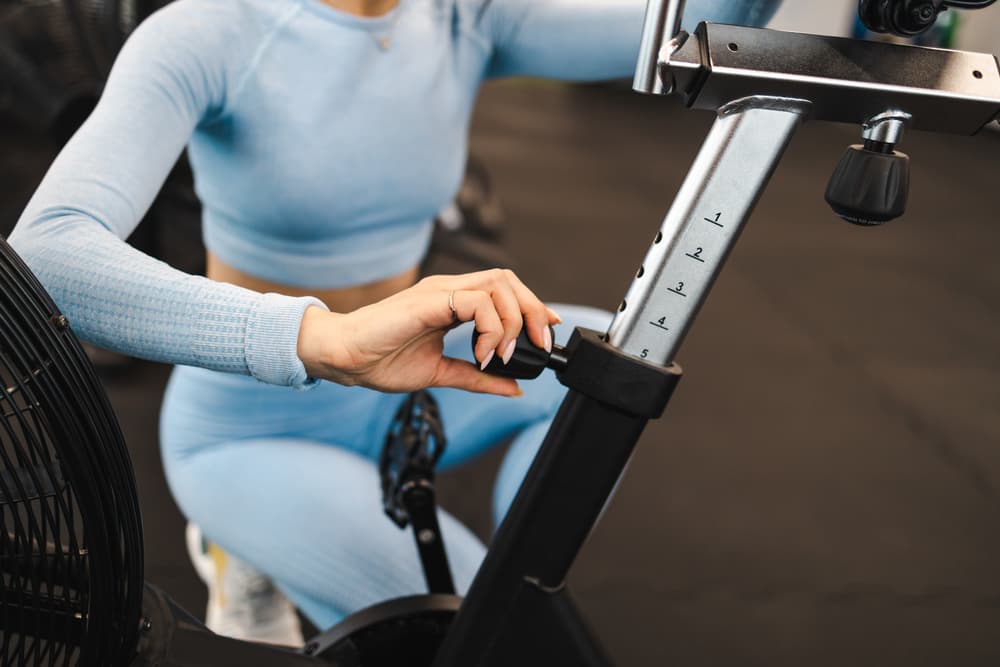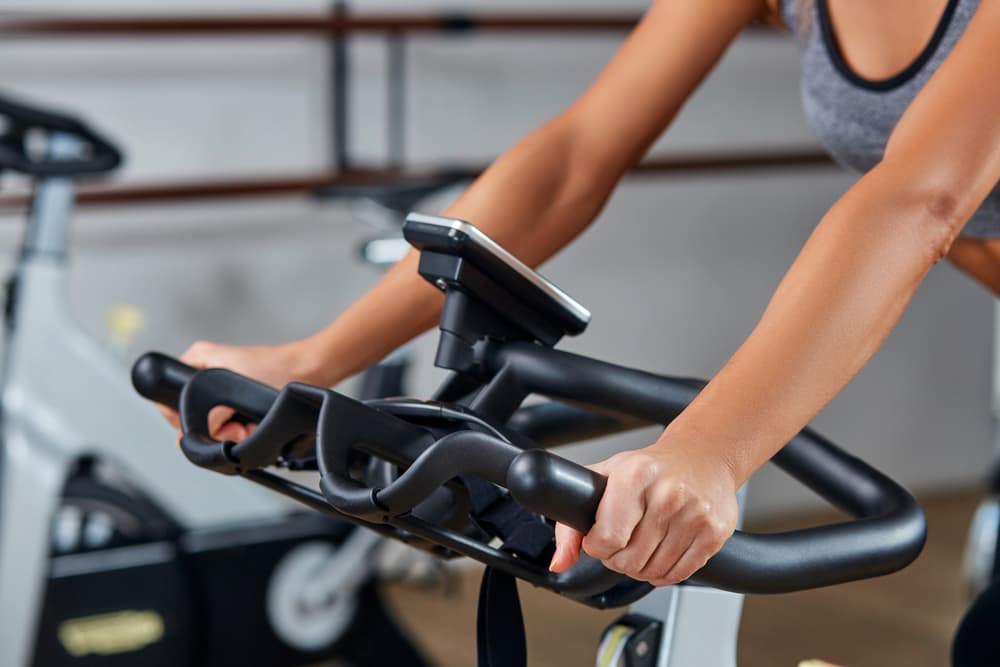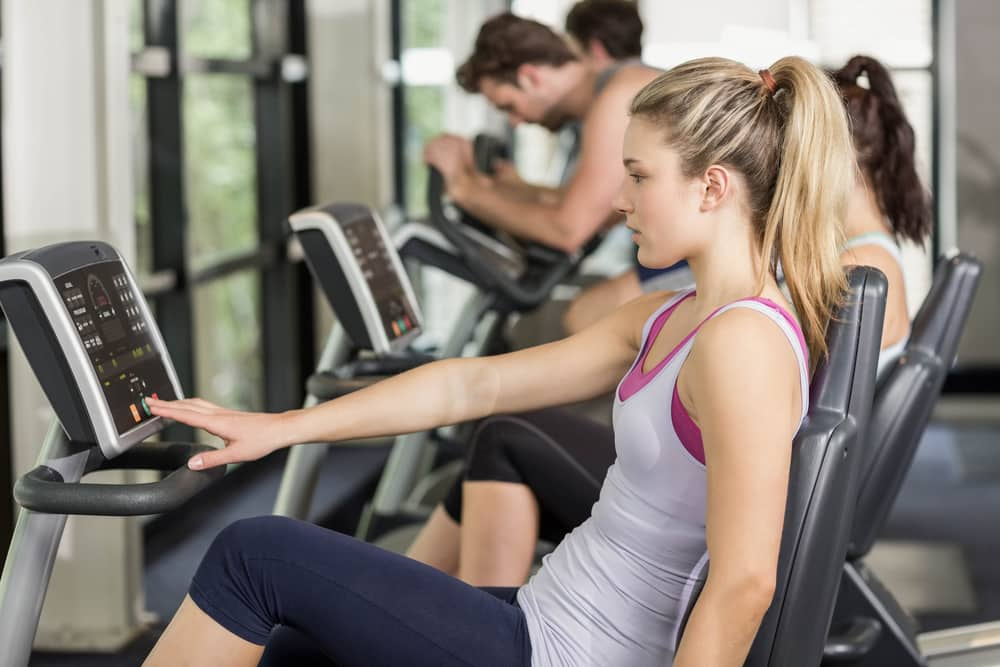Indoor cycling is a favourite cardio exercise because it’s effective. Most exercise bikes are affordable and space-efficient for at-home use, too. However, body aches are likely during or after workouts due to some exercise bike mistakes you should avoid and correct.
Yes, indoor cycling is a low-impact exercise and generally safe for all fitness capacities. Still, improper form, lack of body preparation, or incorrect resistance level could lead to various problems and affect your overall indoor cycling experience.
Doing something about these mistakes now will let you consistently work out at your best.
More importantly, prompt action should protect you from more dangerous health issues.
Read on to learn what causes you to commit these common mistakes and how you can avoid them from now on.
Why Do You Experience Indoor Cycling Body Strains?
Robert Stevens, MD, mentioned two primary reasons for body aches or strains when indoor cycling.
One is poor technique, and the other is muscle overuse.
Remember that our bodies come in contact with the bike seat, handlebar, and pedals during exercise.
Any friction or impact against these machine parts caused by poor riding form naturally results in discomfort or pain.
In addition, pedalling is a repetitive motion. If we combine poor technique with repetitive pedal strokes, the effect on the body will be more serious.
So, how can we do away with indoor cycling body strains?
What Common Exercise Bike Mistakes Should You Avoid?
Cycling-related body strains happen because of the way you use your exercise bike.
How you sit, step on the pedals, and grip the handlebar are contributing factors.
The best solution is to know and practice the proper cycling technique.
Conditioning the body before, during, and after exercise is also crucial.
Your body, after all, is like a machine. It needs preparation for the activity ahead to ensure 100% cycling performance.
To do these, here are the exercise bike mistakes to avoid and fix.
1. Skipping Your Warm-Up and Cool-Down Exercises
A 5 to 10-minute stretch before and after an indoor cycling workout prepares your body for optimal performance.
When you skip this, it will be difficult for the body to cycle at higher resistance or speed levels.
Without proper warm-up or cool-down exercises, blood circulation will not be as efficient.
In turn, insufficient blood flow hinders the muscles from receiving the oxygen and nutrients they need to support your workout and recover afterwards.
All these lead to premature exhaustion and longer recovery time.
- How to Fix: Start your indoor cycling workout with a few minutes of dynamic stretching. Then, cap it with static stretching to bring your body and heart rate to normal. Check out this article for easy stretching exercises pre- and post-exercise bike workouts.

2. Riding an Improperly Adjusted Bike
Hopping on and using a bike that does not fit your body can lead to unnecessary discomfort or pain.
If the bike seat is too high, for example, you will overextend your knees to complete each pedal stroke.
In turn, you’ll hurt your groin, hips, and back.
The same happens when you position the handlebars way lower than your bike seat.
On the other hand, a too-low saddle can strain your lower back and knees.
- How to Fix: Avoid this exercise bike mistake by getting a highly adjustable cycling machine. Keep your bike seat in line with the top of your hip bone. Hop on and test to ensure your knee is slightly bent every full leg extension. Lastly, adjust the handlebar higher or at the same level as your seat, depending on your comfort level.
3. Failing to Breathe Properly
Breathing is a mindless task that most of us disregard during exercise.
Some people would work out with unregulated breathing, leaving them breathless mid-workout.
Others would hold their breaths entirely. Breath-holding is no good as it can lead to blood pressure spikes (Bhandari et al. 2020).
It also lessens your ability to recover in between cycling intervals and post-workout.
Generally, we focus too much on the physical activity itself that we forget our bodies also need sufficient oxygen to do it.
Oxygen acts as your body’s fuel so the muscles can perform their job during exercise.
Without enough oxygen or fuel, your cycling performance lags, recovery takes longer, and other health problems could arise.
- How to Fix: During low-to-moderate workouts, breathe in and out through your nose to avoid this exercise bike mistake. Switch to breathing through your mouth during intense cycling. Go for deep and slow breathing when doing your stretching exercises.

4. Leaning on or Gripping the Handlebars Too Much
Holding the handlebars tight may seem normal, especially during high-intensity pedalling or climbing.
However, putting intense pressure on your hands stresses the ulnar nerve and may cause cyclist’s palsy.
Some medical experts also call it ulnar neuropathy or handlebar palsy.
This condition can make your hands and fingers weak or numb. In some cases, cyclist’s palsy may also hinder free wrist movement.
Also, leaning your body too much transfers your weight on the handlebars, lessening the load your core and quads should get from cycling.
- How to Fix: According to the American Society for Surgery of the Hand (ASSH), you can avoid this exercise bike mistake by changing grip positions and adjusting your saddle height. You can also shorten your cycling duration or have enough rest between long rides. Consider using cycling gloves or a transverse handlebar, too.
5. Forgetting the Correct Riding Form
Most of us are probably guilty of this error, especially when we were still cycling beginners learning the ropes.
We all want instant progress, so we ride as fast as possible or turn up the resistance.
As a result, maintaining the proper posture is quickly forgotten.
When we do that, we only expose our bodies to muscle fatigue, soreness, and pain.
Bad posture, like leaning too much while cycling, also restricts your lungs from taking as much oxygen to fuel your workout.
- How to Fix: Keep your body upright during cycling for optimum oxygen intake. Properly grab the handlebars, relax your shoulders, and engage your core. Go slow and master the correct riding position, and eventually, it will become second nature, even during intense exercises. Our guide for beginner cycling workouts may also help.
6. Working Out on a Too-High or Low Resistance
Resistance makes indoor riding workouts more challenging. It encourages progressive training and muscle toning.
However, it’s also a problem when you select the wrong resistance level. Too-low resistance can make your hips rock or bounce.
It lessens your riding control, which negatively affects workout results and safety.
Riding with too-high resistance is not good, either. You can hurt yourself or damage your bike.
You should also avoid this exercise bike mistake as it makes cycling sessions less enjoyable.
- How to Fix: Test the different resistance levels of your bike to see which one gives you the most control and a light-to-moderate feel. Stay on this level, then crank up your workout intensity when ready. That way, you’re always in charge while reaping the benefits of a fun and productive indoor bike ride.

7. Cycling without Pulling Up on the Pedals
The way you step on the pedals may also need correction.
For instance, you focus too much on your downstrokes while disregarding the pull-up or upstroke motion.
Failing to maintain an equal momentum during pedalling can reduce the impact your hamstrings should get from the workout.
Also, not pulling up may cause your feet to slip and lose control of the pedals, hurting your lower leg.
- How to Fix: Practice putting even effort when pushing down and pulling up the pedals. Imagine yourself doing a digging motion with your foot. It also helps to use pedals with straps or toe cages to secure your foot and avoid this exercise bike mistake.
Final Thoughts
It’s not unusual to feel minor body aches when doing a new exercise or working out after being inactive for a long time.
However, feeling discomfort or pain after cycling for a week or so may be a sign your riding form or technique needs tweaking.
Hopefully, the tips and solutions above help, so you can enjoy daily indoor cycling sessions without the dreaded body strains.
Improve your bike setup and riding technique today for optimum cardio workouts and experience!
FAQs About Riding Exercise Bikes Properly
1. How do I maximise my calorie burn while riding an exercise bike?
Biking with the proper form, adjusting exercise intensity and speed, and practising workout diversity are some ways to maximise your bike sessions. Observing your heart rate and maintaining a consistent fitness routine contribute to efficient caloric burn, too.
2. How can I avoid a sore butt when indoor cycling?
Avoid saddle sores by ensuring an ergonomic bike setup. Sit properly, engage your core, and preserve a relaxed posture while riding. You can also use padded shorts or seat pads for extra cushioning and comfort.
- What Are the Advantages and Disadvantages of Folding Treadmills? - 11 March 2025
- Can You Use a Massage Gun When Pregnant? - 10 March 2025
- What is the Best Pre-Run Food? - 6 March 2025
